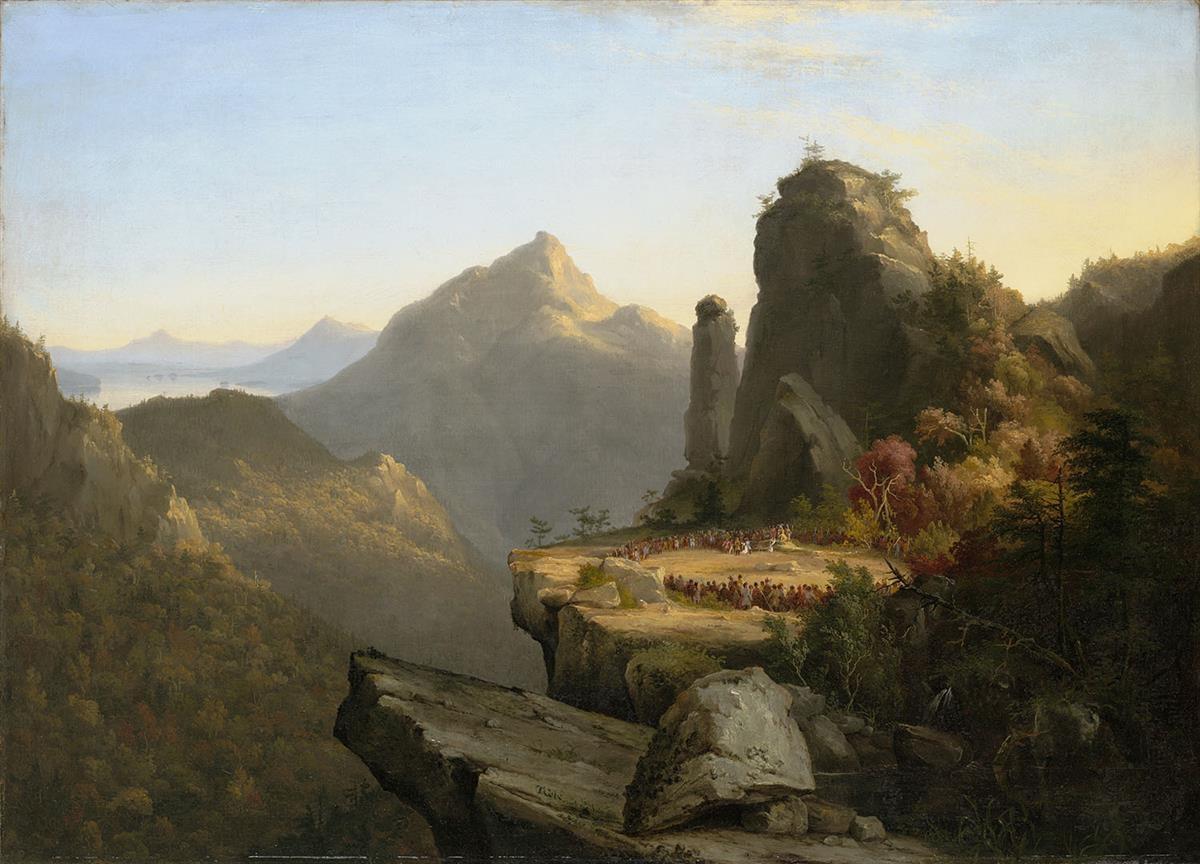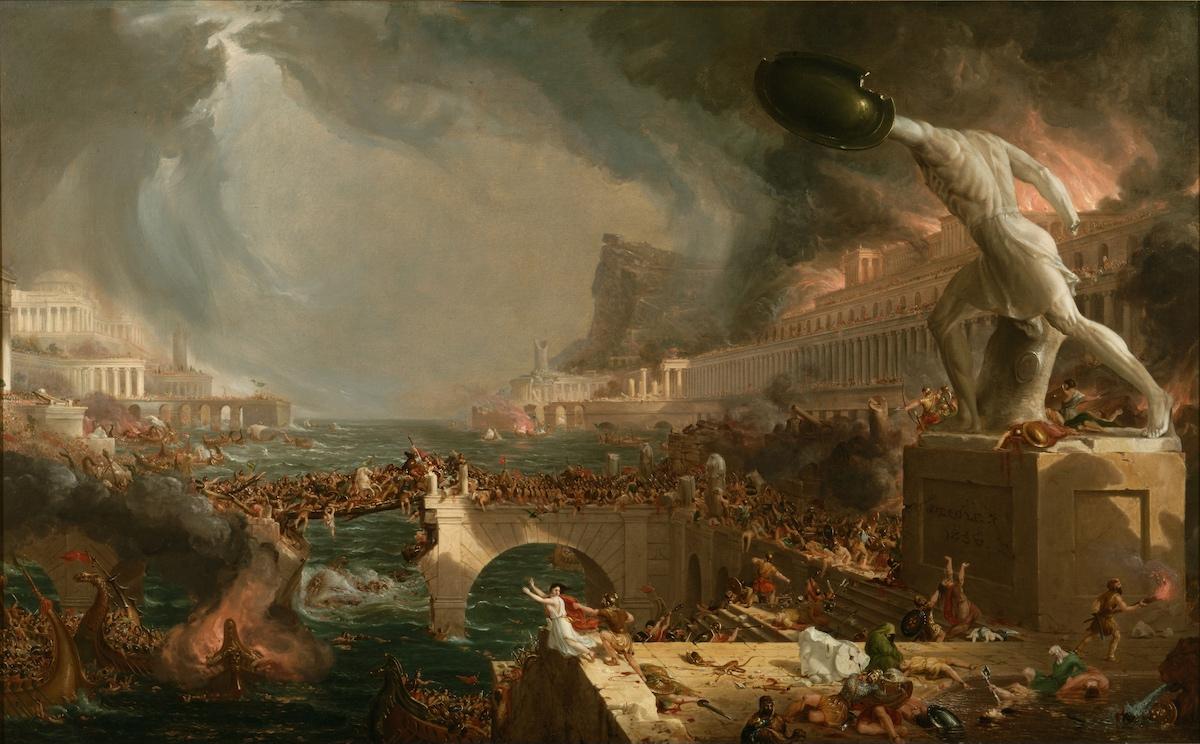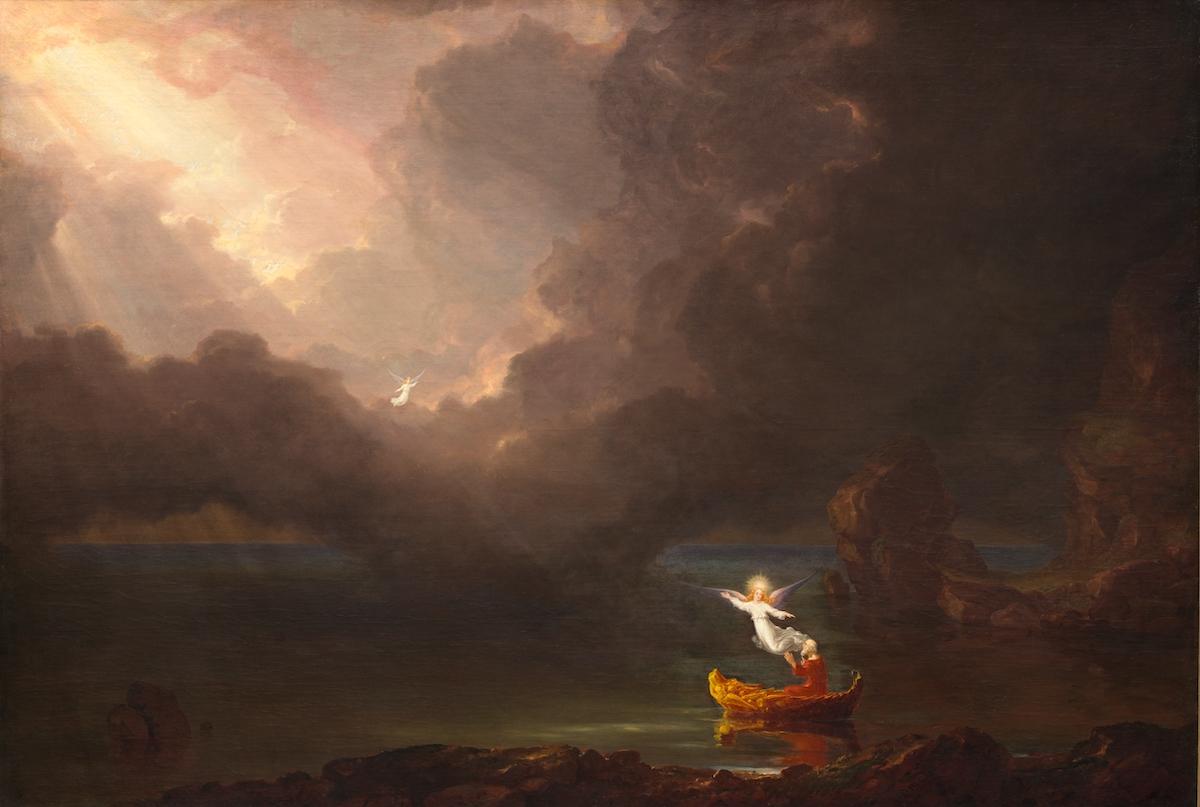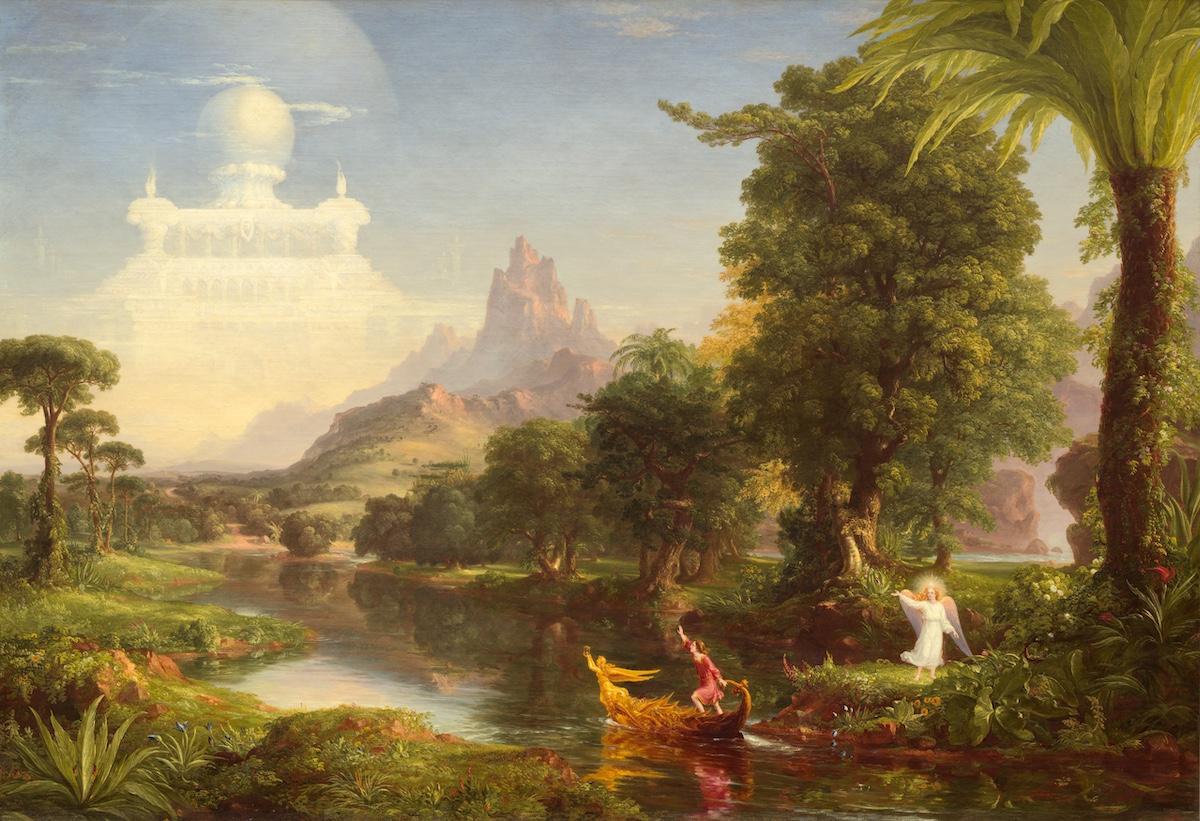Most of his early work was inspired by the scenery at the Catskill Mountains and the Hudson River where Cole lived, with paintings such as Lake with Dead Trees (1825) and View of Fort Putnam (1825) exemplifying his ability to capture the beauty of his own environment. Yet he did not limit himself strictly to the depiction of physical scenes of nature. One of his earliest and most prolific paintings Last of the Mohicans (1827) portrays a fictional scene from John Fenimore Cooper’s famous novel of the same name, becoming a quintessentially American artwork.

Thomas Cole 'Scene from "The Last of the Mohicans," Cora Kneeling at the Feet of Tamenund', 1827, oil on canvas
Thomas Cole is remembered as one of America's earliest and most significant landscape painters. Cole was renowned for his ability to capture the sublime grandeur of the American frontier. Today, his work provides insight into early American's vision of the West and dark legacy of Manifest Destiny.
Thomas Cole was born on February 1st, 1801, in Bolton le Moors, Lancashire. He spent most of his childhood in England before he and his family emigrated to the United States in 1818, settling in Steubenville, Ohio. Initially, Cole worked as an engraver and an apprentice designer of calico prints but was far more interested in oil paintings. He briefly moved to Philadelphia to study at the Pennsylvania Academy of Fine Arts, before relocating with his family in 1825 to Catskill, New York, where he would remain for the rest of his life.
Cole’s professional art career quickly took off after he arrived in New York. During the summer of 1825, Cole took a trip up the Hudson River and into the Catskill mountains, where he would sketch several landscape portraits of subjects like the Catskill Mountain House, Cold Springs, and Fort Putnam. By October 1825, three of his landscapes had been purchased by major figures in the early American art community: John Trumbull, Asher B. Durand, and William Dunlap. Trumbull in particular was an especially useful contact to the artist, as he introduced Cole to Robert Gilmor of Baltimore and Daniel Wadsworth of Hartford, both of whom would become valuable patrons of the artist.

Thomas Cole, The Course of Empire: The Consummation of Empire, 1836, oil on canvas, New York Historical Society

Thomas Cole, The Voyage of Life Old Age, 1842 oil on canvas, National Gallery of Art
As his career progressed, Cole desired to create a “higher style of landscape” that could express religious and moral meaning. He wanted to create landscapes that had their own allegorical significance, focusing on bringing biblical and literary subjects to life. But when this ambition was initially stifled by poor critical reviews of his attempts to do so, he decided it was necessary to travel to Europe for inspiration. In 1829 he sailed to England, spending several years traveling around France and Italy that included extended stays in Florence and Rome.
During Cole’s time in Italy, he conceived of his most ambitious project to date, a multi-part series of landscape portraits that portrayed the rise and fall of an archetypal civilization. When he returned home to the United States in 1832, he convinced the retired New York merchant Luman Reed to fund the proposal. The result of Cole’s efforts culminated in the Course of Empire (1833-1836), a five-canvas masterpiece that received considerable attention and positive critical reviews.

Thomas Cole, The Voyage of Life: Youth, 1842, oil on canvas, National Gallery of Art
Although he continued to paint American landscapes, most of his time would be dedicated to his passion for allegorical landscapes. In 1836 Cole married Maria Bartow of Catskill, who he went on to have five children with. His marriage had a noticeable impact on his work, as during this stage of his career he tended to focus on more religious subjects. In 1840, he completed the four-part Voyage of Life, an allegorical representation of a human’s journey through life on their way to salvation.
Thomas Cole’s work was celebrated both during his life and after it, inspiring generations of American artists. He is considered the founder of the Hudson River School, which included Cole’s protégé Frederic Edwin Church, as well as other notable artists like John Frederick Kensett and Sanford Robinson Gifford. Thomas Cole and the school of artists he influenced sought to present the American West as vast, untamed, and magnificent. Their art both reflected and inspired America's push west, which led to the death and displacement of countless Native Americans. As modern Americans have become more cognizant of this history, Cole's legacy has become tarnished.




























